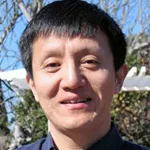
Stanford Report - May 3, 2012
Six Stanford professors were named this week as new members of the National Academy of Sciences. The academy is an honorific society that recognizes distinguished and continuing achievements in original research.
The Stanford scholars were among 84 new members and 21 foreign associates from 15 countries, bringing the total number of active members to 2,152 and the total number of foreign associates to 430. (Foreign associates are nonvoting members of the academy, with citizenship outside the United States.)
The Stanford honorees are Karl Deisseroth, Carol S. Dweck, James D. Fearon, Christopher Garcia, Liqun Luo and Robert Tibshirani.
Karl Deisseroth is an associate professor of bioengineering and of psychiatry and behavioral sciences at the School of Medicine. He is both a practicing psychiatrist and the developer of optogenetics, a technique that allows scientists to tease apart the complex circuits that compose the brain so that the circuits can be studied one by one.
Carol S. Dweck is the Lewis and Virginia Eaton Professor in the Department of Psychology. Her work is at the intersection of developmental psychology, social psychology and personality psychology. She has conducted research focused on the self-conceptions people use to structure the self and guide their behavior. Particularly, she studies the role that mindsets play in motivation, achievement and interpersonal processes.
James D. Fearon is the Theodore and Frances Geballe Professor in the School of Humanities and Sciences. He is a political scientist with research interests in civil, ethnic and interstate conflict, and the political violence associated with it. He also conducts research on democratic theory, the international spread of democracy and the impacts of foreign aid projects on governance.
Christopher Garcia is a professor of molecular and cellular physiology and of structural biology at the School of Medicine. His lab investigates how receptors on a cell surface relay information from the outside to the inside of a cell, a step that is fundamental to virtually all physiological functions.
Liqun Luo is an investigator in neurobiology at the Howard Hughes Medical Institute, professor of biology at Stanford University and professor of neurobiology at the Stanford University School of Medicine. His work focuses on the organization of neural circuits: how they process information and how they develop. Luo and his research team have pioneered several genetic tools used to visualize and manipulate single neurons in the brains of fruit flies and mice. He combines advanced molecular genetics with anatomical, physiological and behavioral approaches to answer fundamental questions about how brains work.
Robert Tibshirani is a professor of health research and policy at the School of Medicine and of statistics in the School of Humanities and Sciences. He has introduced innovative approaches to biostatistics and pioneered methods that have become standard in the field. Specifically, he focuses on computer-intensive methods for regression and classification, bootstrap, cross-validation and statistical inference, and signal and image analysis for medical diagnosis.




